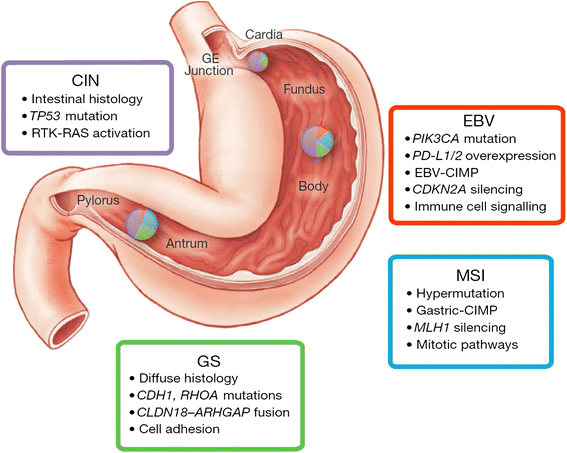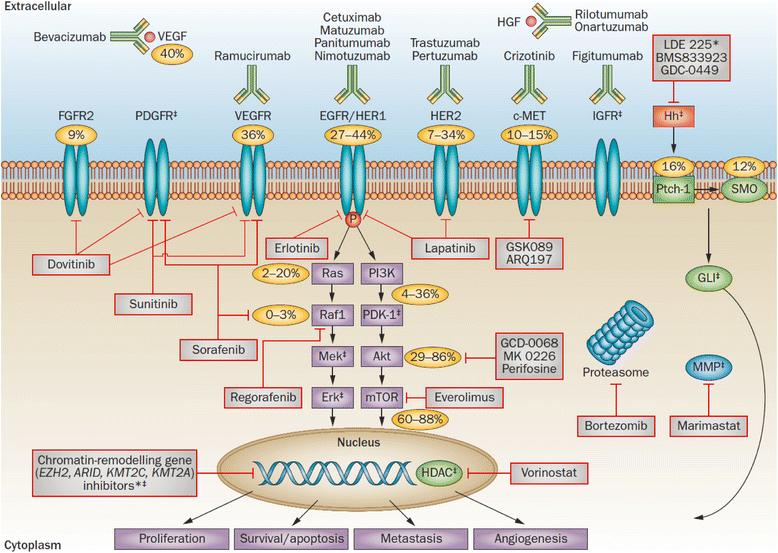Gastric biomarkers: a global review
- PMID: 27514667
- PMCID: PMC4982433
- DOI: 10.1186/s12957-016-0969-3
Gastric biomarkers: a global review
Abstract
Background: Gastric cancer is an aggressive disease with a poor 5-year survival and large global burden of disease. The disease is biologically and genetically heterogeneous with a poorly understood carcinogenesis at the molecular level. Despite the many prognostic, predictive, and therapeutic biomarkers investigated to date, gastric cancer continues to be detected at an advanced stage with resultant poor clinical outcomes.
Main body: This is a global review of gastric biomarkers with an emphasis on HER2, E-cadherin, fibroblast growth factor receptor, mammalian target of rapamycin, and hepatocyte growth factor receptor as well as sections on microRNAs, long noncoding RNAs, matrix metalloproteinases, PD-L1, TP53, and microsatellite instability.
Conclusion: A deeper understanding of the pathogenesis and biological features of gastric cancer, including the identification and characterization of diagnostic, prognostic, predictive, and therapeutic biomarkers, hopefully will provide improved clinical outcomes.
Keywords: Biomarkers; Gastric cancer; Therapy.
Figures



References
-
- Iarc . (2016). GLOBOCAN 2012: Estimated cancer incidence, mortality, and prevalence worldwide in 2012 . Retrieved 19 July, 2016, from http://globocan.iarc.fr/Pages/fact_sheets_cancer.aspx. Accessed 4 Aug 2016.
Publication types
MeSH terms
Substances
LinkOut - more resources
Full Text Sources
Other Literature Sources
Medical
Molecular Biology Databases
Research Materials
Miscellaneous

